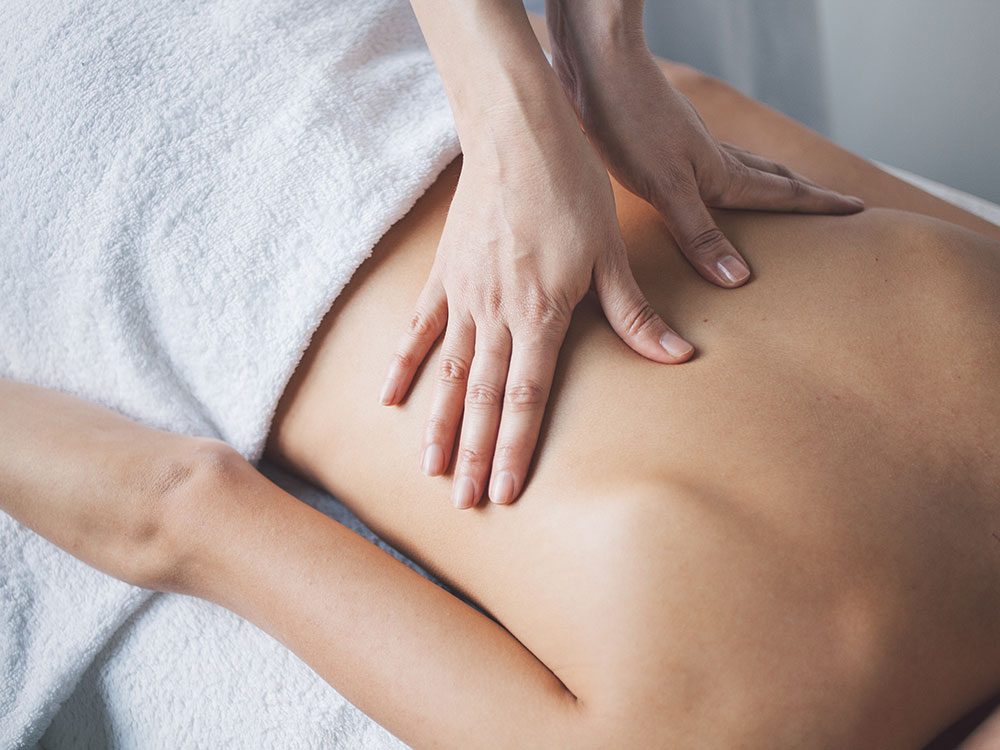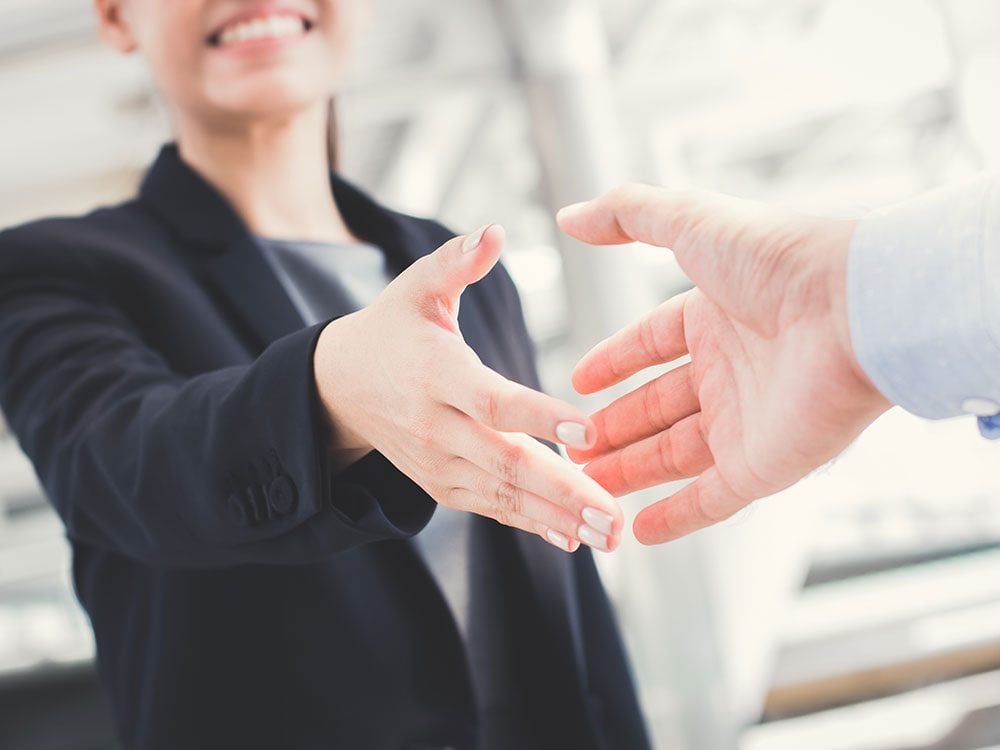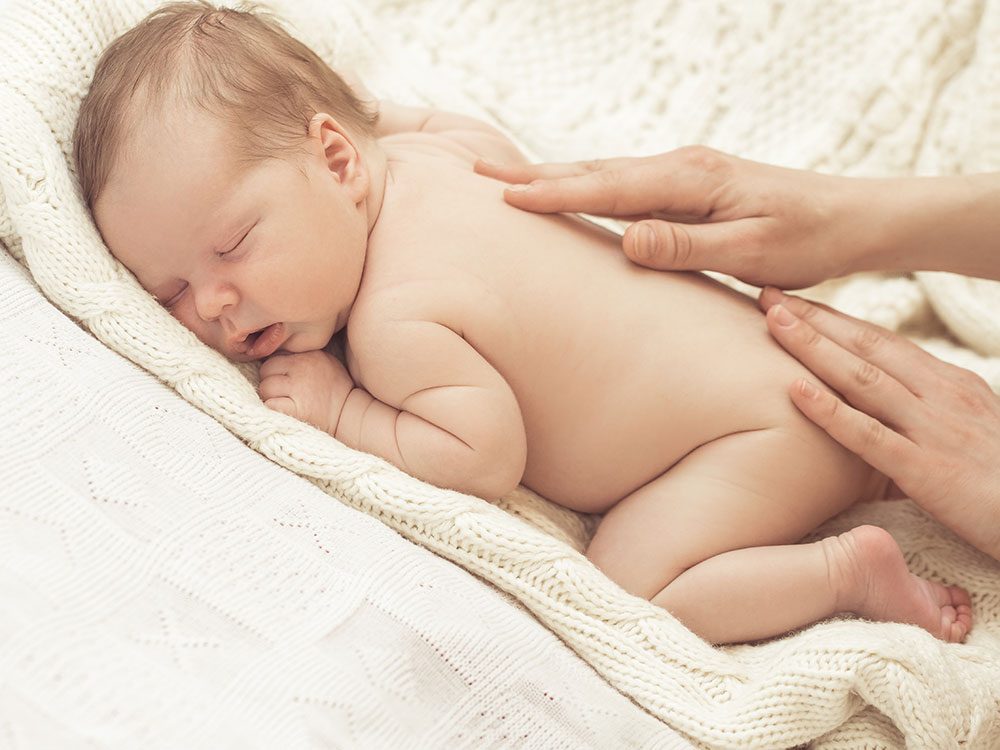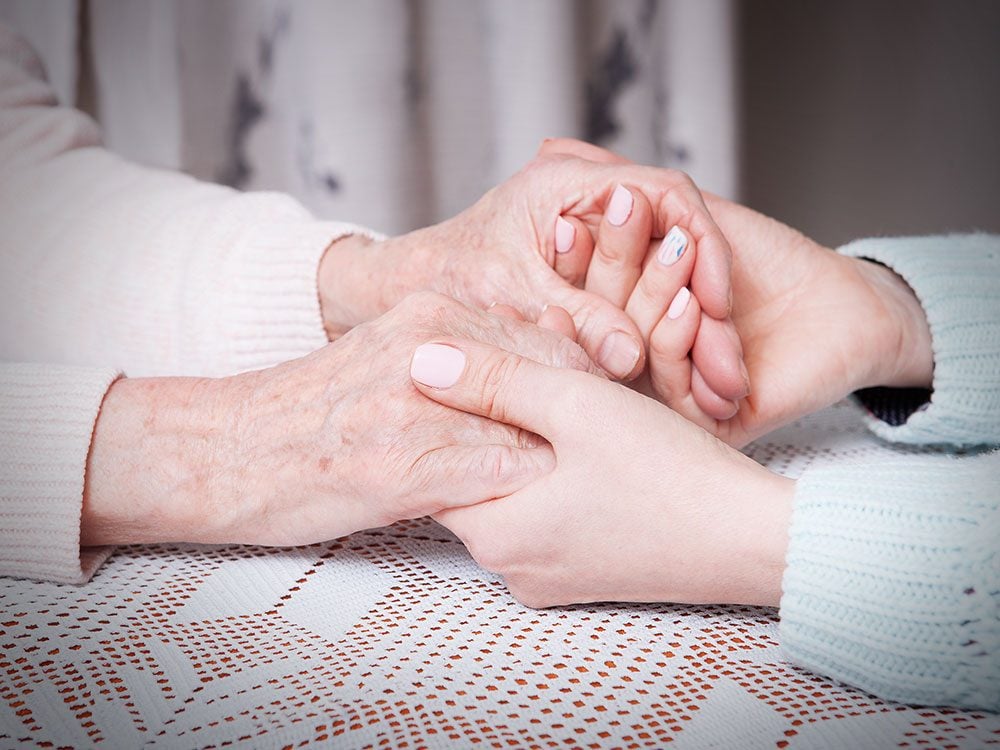
The Healing Power of Touch
Joannie McCutcheon has a deep appreciation for the healing power of touch. In 2005, the 66-year-old was living in Amsterdam and working at a multinational company as an IT specialist when she was diagnosed with two brain tumours. One was a benign meningioma and the other a potentially fatal oligodendroglioma. She named them Melanie and Ollie.
McCutcheon had surgery to remove part of the cancerous tumour, which saved her life but didn’t leave her completely cancer-free. A couple years later, she moved back home to Scotland. Then, in 2015, she became a volunteer with the Iris Cancer Partnership, a charity that offers free massages by specially trained therapists to cancer patients. McCutcheon provides IT support to the organization and, in return, receives a massage every three weeks from therapist and now friend Angela Secretan.
“I go in feeling exhausted and headachy,” says McCutcheon. “She’ll massage my head or my back, and she does reflexology on my feet. She seems to know instinctively what I need, and together we decide what is best for me at that moment. I come out feeling everything is okay again.” McCutcheon says the regular massages, as well as the new companionship the therapy has brought her, have kept her alive.
In Canada, programs like Touch for Cancer in Balgonie, Sask., perform a function similar to that of Iris’s providing, among other things, gentle touch to cancer patients in order to reduce swelling and pain in the hands and feet.
According to current research, these programs make sense. Manuel Arroyo-Morales, a professor of physiotherapy at the University of Granada in Spain, leads studies looking into the effect of hands on the human body—particularly the impact of massage therapies on cancer patients. When touch is consensual and comes from a person with whom the patient is comfortable, says Arroyo-Morales, it helps to reduce pain and fatigue, strengthens the immune system and lowers anxiety. His team’s findings are reinforced by an increasing number of scientists who’ve come to the same conclusion: physical contact can greatly improve our emotional and physical health.
Want to take charge of your health? Check out these 29 Simple Ways You Can Prevent Cancer!

How Our Bodies Register the Power of Touch
Of our five senses, touch is often the one we take for granted. Science has only begun to understand the highly complex system of nerves, sensors and receptors that link our skin and brain to our environment and the people around us.
“There’s still so much we don’t know about touch sensations,” says David J. Linden, a professor of neuroscience at Johns Hopkins University and the author of 2015’s Touch: The Science of Hand, Heart, and Mind. What we do know, he says, is that there are separate sensors for texture, vibration, pressure and itch.
One of the leading touch researchers in the world is Dr. Håkan Olausson, professor of clinical neuroscience at Linköping University in Sweden. He was part of a team that found special touch fibres, called C-tactile afferent fibres, which are responsible for registering and transmitting to the brain the emotional meaning of gentle strokes and caresses. These nerves respond optimally when touched at around 32 C—the temperature of a human hand. “They are particularly sensitive to caresses but also respond to many other types of touch, such as pressing on the skin,” Olausson says.
When the CT fibres aren’t working properly, a gentle touch instead feels aversive and can undermine attempts to form emotional connections to others, says Francis McGlone, a neuroscientist at Liverpool John Moores University in England. CT stimulation, when delivered through nurturing touch, impacts the neural networks in our brains that allow us to see ourselves as separate beings with needs that are different from others. Without this ability, individuals may be unable to read emotional cues, making it difficult for them to empathize. Research last year, led by McGlone, found that children on the autism spectrum may have a difference in the functioning of their CT fibres that causes them to find soft touch from others unpleasant.
For individuals whose CT fibres function normally, however, touch can bring a great amount of benefit, McGlone says. Gentle contact can reinforce social relationships, communicate positive feelings, and even make us more capable of dealing with stress.
Considering massage therapy? Here’s What You Should Know About Alternative Medicine.

Newborn Babies and the Power of Touch
Our need for touch kicks in the moment we’re born. Over the past 15 years, multiple studies have shown that babies who are held skin-to-skin immediately after birth show more stable breathing and body temperatures than those who are separated from their mothers. They also develop stronger immune systems and cry less, which could indicate they feel lower levels of stress. Mothers benefit equally: those who hold their newborns after birth report more confidence in caring for their infants and breastfeed longer.
Over time, infants who receive loving touch early on are more capable of self-regulating their emotions than those who are deprived of sensory stimulation after birth.
Researchers even encourage the regular stroking and holding of premature infants through special portholes in incubators. A 2010 paper published in Infant Behavior & Development found that pre-term babies who received massage therapy gained more weight and had increased bone density, which was associated with shorter hospital stays.
In the neonatal intensive care unit, an infant’s tactile experiences are largely stressful and uncomfortable, which may lead them to be averse to touch as they age. Providing comforting sensory experiences, however, can help these newborns more readily accept loving contact.
The understanding that babies thrive when they receive touch has contributed to a rise in the popularity of infant massage and classes teaching parents the practice.
Elsie Peña Tretvik, of Molde, Norway, sought out such a class because she wanted to comfort and bond with her colicky infant daughter, Maya. By the time Maya was three months old, she was crying for up to three hours each evening.
One of Peña Tretvik’s old friends, Paola Rodríguez, happened to be the CEO of the International Association of Infant Massage—an organization with more than 30 international chapters—which provides instruction to parents and caregivers. When Peña Tretvik contacted her looking for help, Rodríguez suggested her friend take one of the organization’s five-day courses.
The classes transformed Peña Tretvik’s relationship with her daughter. “Not only did I learn how to help Maya relax and relieve her colic, I learned how to read her emotional cues and build my confidence as a mother.” Peña Tretvik decided to become certified as a teacher of infant massage and now offers the course to parents in Molde. “The benefits are huge,” she says. Having recently given birth to her second child, she will teach Maya, now three, how to help massage her sister.
Fascinating by the mind-body connection? Find out How the Way You Move Can Influence Your Moods!

How the Elderly Can Benefit from the Power of Touch
As we age, our sense of touch becomes less sensitive. On the other hand, a 2016 study conducted by Olausson and a team of researchers found that the pleasantness of touch is enhanced with age. When subjects ranging in age from 13 to 82 were exposed to gentle, stroking touch, researchers found that the older participants were, the more they perceived the contact as enjoyable.
Furthermore, research has clearly shown the benefits of touch for the elderly. A 2007 study out of the University of South Carolina, for example, found that adults age 60 and older who received two massage therapy sessions a week experienced lower levels of depression and anxiety. Other studies on older recipients have demonstrated that massage can reduce insomnia and chronic pain. Still, Linden says, touch therapies haven’t yet been applied widely in care homes and other senior-oriented health services.
As well as improving our quality of life, the emotional connection found in therapeutic touch—such as massage, acupuncture and reflexology—can also have a profound effect at life’s end, says Simon Robey, the coordinator of complementary therapies and the interim head of supportive care for St. Joseph’s Hospice, in east London, U.K. As part of its care, the hospice provides touch therapies free of charge—not only to their dying patients, but to their loved ones and families, who are all under tremendous stress.
Robey describes the experience of a young woman in her early 30s who was hours away from death. Her family was supportive, staying by her bedside day and night, but the therapist offered additional relief, massaging the dying woman’s hands, legs and feet. “She was drifting in and out of consciousness…but everyone noticed she became remarkably more relaxed; she really responded to touch,” he says. “For the family, there was something quite reassuring that it helped make her final hours more comfortable.”
Even once we’re aware of the importance of loving touch, the question remains: How do we fit more of it into our day-to-day lives?
One easy way is to adopt a pet. Stroking a four-legged friend produces oxytocin, a chemical in the brain that plays an important role in helping us to feel calm, relaxed and trusting. Wherever you find it, whether it is a therapeutic massage, holding hands, going to the hairdresser, hugging our kids, our partners or even a stranger, says Linden, “Maximizing touch in your life is a good thing.”
Here are 5 Self-Massage Techniques Worth Trying!